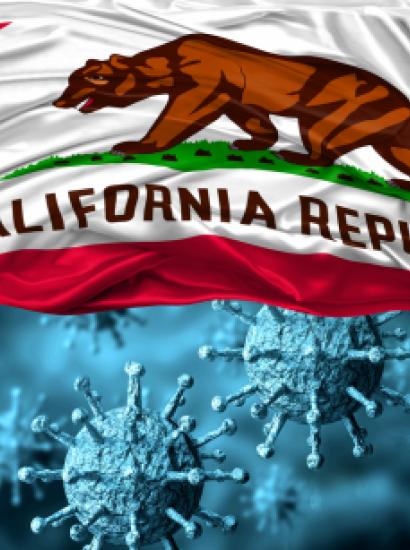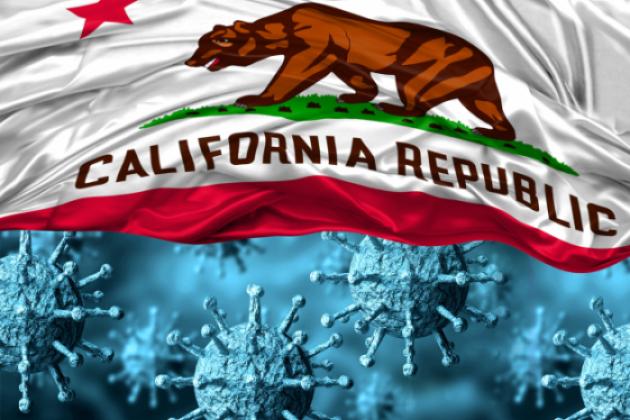- Health Care
- Politics, Institutions, and Public Opinion
- State & Local
- California
California is the most politically progressive state in the country, but even the most fervent progressives are finding out that progressivism is extraordinarily costly, and even deadly.
During California’s 2011 budget crisis, Governor Jerry Brown and the Democratic-controlled state legislature faced significant budget tradeoffs. Progressivism won, and the governor and the legislature disposed of an enormous investment in emergency health-care equipment and portable hospital facilities.
Now that shortsighted decision has come back to bite California as it scrambles to find enough health-care capacity and equipment during the COVID-19 coronavirus pandemic. California’s lack of preparedness has put our health-care workers at risk. A survey by a nurses’ association found that only 55 percent of nurses had access to an N95 mask, which offers the recommended level of protection against the virus.
Imagine mobile hospital units, each the size of a football field and including ventilators, N95 masks, an ICU ward, and medical imaging equipment, along with capacity for 21,000 hospital beds, that could travel anywhere in California at a moment’s notice.
This is just what the doctor would have ordered for the current coronavirus pandemic. And California had this capability under Governor Arnold Schwarzenegger. The investment described above in emergency supplies and hospital capacity was made in 2006, when Schwarzenegger was deeply concerned about the potential of a pandemic during an outbreak of the avian flu.
Recalling his decision to invest in emergency medical supplies and portable hospital capacity, Schwarzenegger recently remarked: “I thought we have to be prepared—because we are the fifth largest economy in the world.”
“In light of the pandemic flu risk, it is absolutely a critical investment,” he said at a June 23, 2006, press conference. “I’m not willing to gamble with the people’s safety.”
Schwarzenegger’s plan—which was supported by the Democratically controlled legislature—was exactly what governments should do. The main priority of any government is to protect its citizens, and this was an important investment given the rise of dangerous viral outbreaks for which there is no vaccine or surefire treatment.
What happened to the Schwarzenegger investment? In 2011, Governor Brown and the legislature chose not to spend the few million dollars it would have required to maintain the stockpile. It was broken up, with some items going to the National Guard, some to local agencies, and much of it unaccounted for. As far as anyone knows, these agencies did not maintain the equipment either, so the respirators expired.
But even if the governor and the legislature believed that the stockpile wasn’t affordable in 2011, when California had its worst budget crisis since the early 1990s, why wasn’t the stockpile restored later, when the state government was rolling in funds?
Three years later, in 2014–15, the California budget roller coaster had turned back up, with revenues increasing by 36 percent from around $82 billion in 2011 to around $122 billion by 2014.
Despite this budget surge, California did not restore this investment. Nor did California invest in other critical areas. California’s public schools are crumbling as a result of deferred maintenance expenditures. California roads are in such bad condition that repairs and accidents resulting from the state’s roads and highways are estimated to cost California drivers nearly $3,000 per year. With 26 million licensed drivers in the state, that works out to about $78 billion per year.
The list of neglected investments goes on, ranging from water pipes that are 90 years old to dams and levees that are considered “high hazard” by the Society of Civil Engineers.
So where did the funding go? Over $1.5 billion annually went to the construction of California’s bullet train, which is perhaps the greatest spending fiasco in the history of the state. The train is several years behind schedule, and its cost has increased nearly threefold over initial projections.
State medical spending takes an enormous part of the budget. This exploded when California aggressively adopted Obamacare, which brought an additional 5 million Californians into Medicaid, with its new eligibility requirements.
California’s spending on Medicaid is now approaching 40 percent of the state budget. This is not to say that state government ought not to support health care, but it should do so wisely.
Thus far, California’s Medicaid plunge has been anything but wise. An audit by the inspector general found that over $1 billion had been paid out to ineligible recipients in just a six-month period. Annualized, this means that Medicaid eligibility mismanagement alone costs about one percent of the state budget.
Health-care outcomes are relatively poor under Medicaid, which leads to repeated use of health-care resources for the same issue. And California’s stringent limits on physician reimbursement, which is the state’s preferred approach to trying to contain costs, has led to a rapidly declining pool of doctors who will accept Medicaid patients. This means that more and more Medicaid patients will use emergency rooms as their primary-care physician, driving up costs further.
Without the emergency medical investments, Governor Gavin Newsom warned, 25 million Californians could become infected, overwhelming state hospital capacity. This led Newsom to lobby Trump for federal assistance.
Thankfully for California, Trump authorized the 1,000-bed naval hospital ship Mercy deployed to Los Angeles. Newsom, usually a strident critic of Trump on virtually everything the president does, has been remarkably gracious in his responses about Trump’s help for California during the pandemic.
The state also planned to lease beds in convention centers, motels, and state university dormitories. One 177-bed facility in the Bay Area could cost more than $3 million per month. Suddenly the abandoned emergency facilities designed by Schwarzenegger look better and better, and the decision to abandon them looks much worse.
Meanwhile, California policy makers continue to ignore the foundations of sound government and pursue their own pet projects and those of politically important constituents.
Mandatory solar panels and expensive insulations and energy-efficient appliance requirements that drive up the cost of a new home by $40,000. Prohibiting many people from working as an independent contractor. Permitting drug abusers to take over city streets to the point that drug abusers outnumber public high school students in San Francisco. Prohibiting girls’ and boys’ clothing and toy sections in retail stores in favor of gender-neutral merchandizing.
While voters will reasonably disagree over the levels of priority that these issues should have, it is obvious that all of them become patently irrelevant when a deadly virus erupts. The virus is something that government is always supposed to be prepared for and defend us against. Requiring that houses have the most energy-efficient windows and thickest insulation in one of the most temperate regions in the world is not.
Sadly, California lawmakers have forgotten what government should do and should not do. And this is the main reason why California becomes more unlivable every day.
















